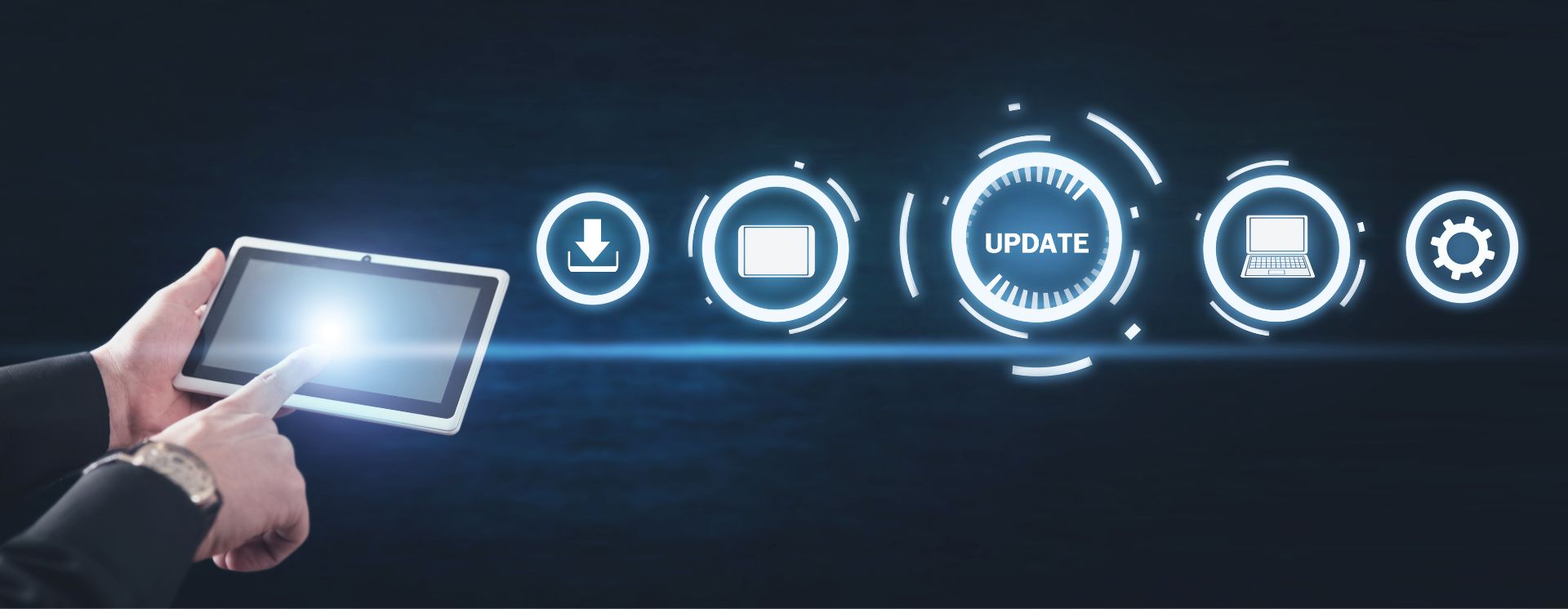Patch management (or patching) simply means keeping an organization’s various IT systems such as hardware, software, and network infrastructure up to date. However, it’s much easier to explain than it is to implement. This is because IT systems have become more and more complex and it’s hard to anticipate threats.
Patching is a constant, ever-increasing task that needs to be managed on a daily basis. Since the pandemic, there are many more remote workers outside of the corporate network, meaning patching is more important and has taken on a greater sense of urgency. In addition, vulnerabilities in software are one of the easiest ways for hackers to gain access to sensitive information. Installing the latest security patches will help in closing open vulnerabilities.

What are the benefits of patching?
Taking the time to patch your systems has many benefits. Here are several:
- Mitigate Risks: Software, including operating systems, applications, and plugins, can be vulnerable to many methods of exploitation. Failing to patch may expose your business to known vulnerabilities that hackers can take advantage of. Regularly updating and patching software can mitigate the possibility of exploitation.
- Stay Ahead of Hackers: Since cyber threats constantly evolve, regular software patching helps you stay ahead of both known and unknown threats. Hackers often exploit well-known security flaws in outdated software, so keeping your systems up-to-date is your first line of defense and reduces your overall vulnerability.
- Improve User Experience: Patching can fix bugs and other problems in applications, improving the user experience.
- Remain Compliant: Many industries have strict cybersecurity regulations. Patching helps you comply with industry regulations, therefore reducing the risk of fines and legal issues.
- Maintain Data Integrity: Compliance is not only a legal requirement but also a demonstration of your commitment to safeguarding sensitive data. Customer trust is paramount, and a data breach can erode it quickly. Properly patched systems help maintain data integrity, ensuring that your customers’ information remains confidential and secure.
How do you know what’s right for your organization?
When it comes to patch management, there are many questions to answer, such as:
- Which systems should be patched first?
- What about browsers and IoT devices such as connected printers and network storage appliances?
- Can we automate patch management?
- Can we support multiple operating systems?
- Is third-party application patching offered?
- Can we perform a pre-deployment self-audit?
- Can we create patch profiles?
- Can we deny patches for a specific piece of software on a single device?
- Can we run a patch on demand?
- Can we remove an installed patch?
- Can a patch be installed immediately?
- Can we create a patch install maintenance window?
- Is patch management reporting provided?
The right IT partner can answer all the questions above and make it easier to automate your patch management.
Planning and coordination are key
You want to 1). have consistency across all your systems to make sure you can find all vulnerabilities and 2). ensure all patches have been successfully applied. These two steps are where the skill and experience of an expert come into play.
Your organization may not be able to support this, but the right Managed Service Provider (MSP) can handle all your patching needs.
What are some important considerations with patching?
When an issue is identified and the patch is available, you should respond quickly. Delays in patching could cause issues, and many breaches are caused by companies that delay their patching.
The Common Vulnerability Scoring System (CVSS) is a good way to evaluate and rank vulnerabilities using a standardized, repeatable and vendor agnostic approach. If you choose to work with a partner, they should be prepared to immediately inform you of the severity and scores of any vulnerabilities that are discovered. This will help them prioritize patches and ensure that security vulnerabilities are fixed as soon as possible.
It’s also critical to know when to replace outdated equipment and software. For example, are you still running Windows 7? It hit its end of life in January 2020, and Microsoft will no longer send security updates, which increases your risk of an attack. Additionally, some infrastructure like drivers and firmware are often left unpatched. If you struggle to keep track of and maintain all of your IT assets, you can work with a reliable partner to handle all the necessary updates.
Ready to learn more?
If you have questions or want to learn more about IT systems patching, talk to a WIN Specialist today.
